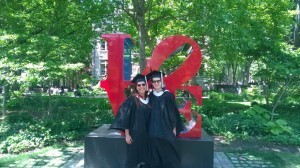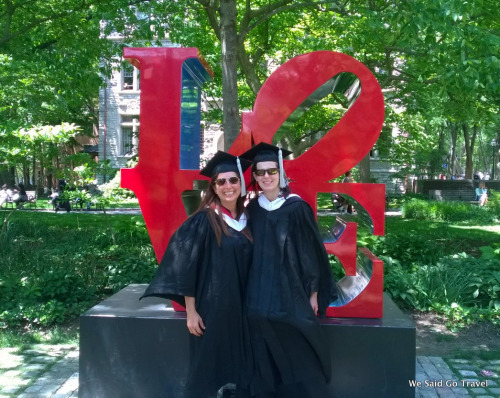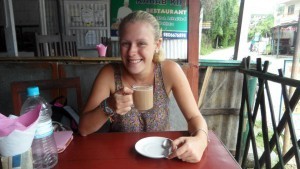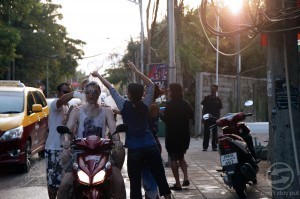Lisa Niver's Blog: We Said Go Travel, page 385
June 8, 2014
Ready for a Risk? IndependenceTravel Writing Contest is OPEN!
Thank you to our winners and all the participants in theInspiration Travel Writing Contest. Enjoy all the entries. Thank you for reading, commenting and being in our community! I hope you will be inspired to join in our Summer 2014 Independence Writing Contest!
BE BRAVE! TAKE A RISK!
Share a story in our Independence Travel Writing Contest!
We are looking for an article about your act of freedom-a place you chose or that allows you to feel free. Be inspired by Sara Barielles’ song, Brave, and share “What you want to say.” We want to “See you Be Brave…and start speaking up!” Where are you most able to be your true self? In Nellie Bennett’s Only in Spain, she watches a flamenco dancer and shares wanting ”to attack my life with that passion, to live with her joy and her devotion to her art… I’d wanted to feel and smell and taste life, and live like that dancer on the stage in Seville, risking that triple turn, never sure she wouldn’t spin right off the stage.” Your place of freedom might be far across the globe or in your own backyard.
Please enjoy all the videos from my trip to Puerto Rico with Richard Bangs and Orbitz! I made a special playlist to host them all. Click here.
I wrote about our journey for Frankly Penn, the alumni blog of the University of Pennsylvania: Filming in Puerto Rico. I recently wrote about being at my 25th college reunion! Living an “As Is” Life in a World that Wants “So Perfect!” Thank you to my roommates, Joyce and Barb, for all our amazing times years ago and then together again on campus!
Barb and I were honored to walk in graduation! Video and article about hearing John Legend (class 1999) speak will be coming soon! We spent the morning between the Penn Parade and wearing graduation robes at the Philadelphia Art Museum with Living Beyond Breast Cancer for YOGA ON THE STEPS with 1500 friends!
LATEST NEWS: We Said Go Travel on YouTube just went over 220,000 views! Follow or subscribe to the channel to know when each new video is posted. Thank you for every click, comment and story you have shared! I really appreciate it!
Thank you for your support. Connect on Facebook, Google+,Instagram, LinkedIn, Pinterest, SlideShare, Twitter, and YouTube.
Thanks again! Lisa (Click here to sign up for this newsletter. )
WSGT YouTube channel is now over 220,000 views!
Enjoy!!
The post Ready for a Risk? IndependenceTravel Writing Contest is OPEN! appeared first on We Said Go Travel.
June 7, 2014
Bratislava, Slovakia – The Cost Effective City Break
Located between Budapest, Hungary and Vienna, Austria, Bratislava, Slovakia’s capital, is a charming city, the largest in the country and a gem waiting to be discovered.
When I first looked up ideas for our second wedding anniversary, Bratislava and Prague (Czech Rep.) competed for “first place”. I was at that point when I had found accommodation and transport option to both cities and enlisted the help of fellow travelers to decide.
Bratislava, with its charming medieval inner city, a castle overlooking the Danube, a ruined castle located at the confluence of Morava and the Danube, a charming hidden treasure (The Blue Church) and very friendly locals has rapidly made us love her. On top of all the lovely things, the city is very affordable, it’s easy to get here and if you find accommodation close to the Old Town you won’t need to use the public transportation at all…you can just walk.
How to get to
We arrived in Bratislava by train. We decided on spend a night in Budapest – coming from Romania – and then took a train the next morning, arriving in Bratislava by early afternoon. The same train goes to Prague and then all the way to Berlin. Gotta love Europe and the short distances between capitals!

The Twin City Liner coming from Vienna
If you want a special way to get here, you can fly into Vienna and then hop on the Twin City Liner. It only runs from mid- April to early- November and it takes 75 minutes to connect the two capitals. It makes it very easy to just stay in Vienna and then hop to Bratislava for a day trip or the other way around.
The city is also served by an airport. Most flights are operated by Ryanair but Norwegian Air Shuttle also has some flights. The two major airports located near-by are the ones in Vienna and Budapest.
Where to stay
Look for accommodation as close to the Old Town as possible. You’d be within walking distance of all the main sights and even close to the Main Train Station.
We stayed at a hostel located on the pedestrian street Obchodna, within short distance of the entrance to the Old Town and with lovely views of Bratislava Castle. In May 2014 we paid 40 euros / double with bathroom ensuite (plus free wi-fi, electric cattle and satellite TV with English channels).
What do do
While the city is very accessible when it comes to entrance fees and food, who doesn’t love to also do free things in Bratislava ?
Start with exploring the Old Town. Get a map (from the tourist info center at the train station , for example) , put on those good walking shoes, get your camera and start exploring. St Martin’s Cathedral is imposing and interesting (and you can visit it for free when the choir practices), The New Bridge can offer a good walk and some lovely views of Bratislava Castle, and the statues will make you laugh every time you see one.
The Slavin Monument is said to have the best views of the city – we haven’t made it here this time – and if you walk to Bratislava Castle, enjoy every minute of it and the interesting view.
Then you can visit museums. I loved the Museum of Arms located within Michael’s Gate, the 51m tower and is the only gate to the Old City left standing (there were four). Enjoy the views from the viewing platform.
The Museum of History located within Bratislava Castle was a disappointment. We expected too much of it and we were given almost nothing. However, from the 2nd floor you can climb to the Tower and although it’s been restored and it doesn’t feel or look original at all, the views are interesting.

View from one of Bratislava’s Castle Towers
I highly recommend a visit to Devin Castle and to get there , a cruise on Danube. It’s only 8 euros return (for adult) and aside from the views along the way , you’ll be delighted with an incredible ruin of what used to be Devin Castle. The place has been settled from the Neolithic and fortified since the Bronze Age. Its location – at the confluence of Danube and Morava – gave it an important strategic advantage. The castle has been first mentioned in 864 and in the 13th century a stone castle was built to protected the border of the Hungarian Kingdom. The Castle has never been taken.
Don’t forget to sample the local food and their beers and wines. Vegetarians won’t find many local dishes to enjoy but I have found vegetarian dishes in all restaurants and cafes we’ve tried.
All photos by Traveling Cricket and may not be used without permission.
The post Bratislava, Slovakia – The Cost Effective City Break appeared first on We Said Go Travel.
Reunion: Living Life “As Is” Or “So Perfect?”
Author: Lisa Niver Rajna, C’89
Wandering on Madison Ave in Manhattan last week, I noticed paparazzi everywhere. After asking, a woman told us, with tears in her eyes, that JLo was eating lunch. I would have missed her. She did not look “So Perfect” but she is stunning. As I left New York City for Philadelphia for my twenty-five year college reunion, I have been thinking about what have I done and what do I want for the next twenty-five years!
In a life filled with product placement where JLo is lifting her Coca-Cola glass so many times per hour on American Idol, our lives have been given a structure that we might not purchase if it were not so insidious.
In As Is by Rachel Michael Arends, the story is told through several narrators and Arends is able to share deep perspectives about how people with different lifestyles lock themselves into their own cage about money, sexuality, and professions of what they think that want and should own and should do.
Through Arends’ intriguing characters, we are able to wonder and wander. Is it a good choice to be an artist? Is it okay to defer your dream to care for your father? Most of the interactions and characters would have accepted the decisions of their friend or family member if they had only been told. Fear made nearly every character in this book withhold their personal truth.
Hiding themselves made them seem like a cheap imitation of what they could have brought to the table. Choosing to be courageous and wish for what they really wanted and reach out to receive it often only comes after tragedy and hardship but hopefully Rachel Michael Arends’ novel gives you the hope to share your story and live a life painted fully without regrets.
Early in the novel, Gwendolyn says: “On television it can look glamorous, and perhaps some people would love this lifestyle. But I don’t,” I wondered what didn’t she like? And who was she really?
Wandering the parade and picnic at the University of Pennsylvania, I thought what would life be like if we did not pretend. Gwendolyn believes that Armand “actually enjoys being So Perfect all the time,” it gave me pause to think about who do I know who resembles that remark and do they feel like Gwendolyn that “it just seems wrong, incongruous, and unnatural,” and more of a cage than a life.
There were many buttons to wear at Reunion: “I met my wife at Penn,” “
w/ Joyce Lim Twomey
She has been told by Trey, her producer, “I’m lucky to have this job, that anyone in her right mind would want it.” At an Ivy League institution, in marriage or in many other settings, we are sold that line about being lucky. I went to medical school because I was smart in science. Like Gwendolyn I felt, “I don’t want to let anyone down…[but] I’m beginning to fear that I’ll be trapped in this mansion forever.” We sometimes become embroiled in a labyrinth or career and we seem to be stuck. Breaking out of the mold and consciously taking a different path can be a struggle but isn’t the freedom, to be who we really are, worth it?
When we become lost from our selves, we often need someone like Gwendolyn’s sister, Megan, to ask us: “What’s your plan? Are you going back there?” We all want to have someone in our life that we can tell as Gwendolyn does, “You’re like an island of sanity in the craziest day I’ve ever had.” It is possible we have those people already if we would only be honest with them about how we feel and what we need. Most of us keep our wounds and concerns a secret only sharing what we think looks “So Perfect” to the constant measuring up on Instagram and Pinterest.
When one character with a cane walks on a floor above Gwendolyn with a sliding sound, she muses, “It’s strange to think of carrying your damage on the outside where everyone can see it.” What if we shared our fears and foibles on Facebook and not just our fairytales that come true? Carrie, a character who is a fan of Gwendolyn on television but becomes a true friend in the story, shares, “The biggest thing I’ve learned over the course of this year is that life is one big surprise after another, and maybe I should loosen up and try my best to roll with it.” As I walked the parade on Saturday standing in between the two wonderful women who were my college roommates, I realized that I am so lucky in both an “as is” and “so perfect” way to have walked this road surrounded by people who know what I look life in real life and want to be friends anyway! Whether there are tears of joy or sadness, they have always run to my side, whenever I am ready to share this rollercoaster of life.
Arends’ character, Armand, realizes that “As Is,” could be his “motto for acceptance. Not an excuse to settle necessarily, but a reminder that at a certain point, you just need to say, OK, enough is enough! I’m sick of chasing the dream of perfection and that’s not a failure.”
Gwendolyn does believe in fate, as she says, “You have to. I just saw a falling star out the window and I wished for you. When I looked up, there you were!” In some ways like the movies, we want to say, “I wished for you” and for the person to appear. What if you are really wishing for yourself to stand up, take up space and live your dreams? I wish for you that you are inspired to pause and think about your own parade and find a path that leads you to yourself and the fulfillment of your best dreams.
w/Barbara Yorke
About the Author: Lisa Niver Rajna (CAS 1989) was honored to walk in graduation on May 19, 2014 with her classmates from twenty-five years ago! Learn more about her journeys at WeSaidGoTravel.com andScienceisntScary.net.
This article first appeared in Frankly Penn!
The post Reunion: Living Life “As Is” Or “So Perfect?” appeared first on We Said Go Travel.
June 6, 2014
Macao: the Hardly Seen Portuguese Side
I visited Macao during the cool month of December last year. Staying there for two days, I managed to visit all its historic monuments and properties that make up the UNESCO World Heritage inscription (together with some of its casinos :p).

Ruinas da Sao Paolo, a masterpiece of late Manueline architecture in Asia.
For most heritage geeks, I share the assessment that Macao is largely a “misinterpreted gem”. At present, when people hear Macao, what immediately comes to their minds are big casinos and luxury hotels. The ruins of St. Paul church (Ruinas da Sao Paolo) only comes as an afterthought as its most iconic landmark – in fact, for most, this is the only place they think they’ll see in this territory. Beyond the picturesque Ruinas da Sao Paolo, not many visitors get to see the bigger picture that Macao offers as the best preserved Portuguese-era colonial trading town in East and Southeast Asia.

Largo do Senado, the main square of Macao. The white building at the far end of the square is the Loyal Senate Building. Again, there are skyscrapers poking here and there.
Though Macao’s monuments are at some distance from each other (the Guia Hill Fortress being the farthest), I still found going around Macao to be a refreshing experience. Firstly, the monuments are truly representative of various cultural testaments and historical stages of the town’s development; thus, the values being represented by each monument hardly overlap one another. Secondly, the government has to be commended for doing a great (and colorful) job in preserving their enduring gems in good conditions.

Beautiful red windows in the in-house courtyard of Zheng Guanying’s Mandarin Mansion in the Lilau Square area – the first settlement of the Portuguese on Chinese soil.
Personally, I enjoyed visiting these places: Senate Square (Largo do Senado), Mandarin Mansion, Lilau Square, A Ma Temple, and the Protestant Cemetery compound. I also found my visit to the Santa Casa da Misericordia Museum (its entrance is on the right side of the building) memorable as it is one place where one can see religious artworks as a product of the blending of two cultures and their respective marks of craftsmanship. Here, one can see the porcelain images of Chinese-looking Jesus Christ, and other curios. Nevertheless, Macao’s blend of the East and the West is best seen through the various religious edifices it has. It is even interesting how one Buddhist temple sits side by side a Christian church (in ruins).

San Agustin Square and the Iberian-inspired wave-patterned floor that is common to most cities in Portugal.
Nevertheless, I also sensed a tourism versus conservation dilemma lingering around, too. I noticed that there seemed to be foreseeable threat that the sites will face in the next few years with their seemingly weak buffer zones and Macao’s lack of proper urban planning and traffic management. One of the biggest threats to most cultural sites across the world is urban pressure, and Macao is indeed rapidly modernizing. I have yet to see how their government is looking at the preservation of the aesthetic and visual integrity of the historic monuments and their immediate environs amidst modern, high-rise edifices and installations around them.

Sam Kai Vui Kun, a small Chinese merchants’ temple that has been instrumental in shaping Macao’s trajectory as a powerful trading town.
By and large, the monuments of Macao are indeed interesting. As counterbalance, however, I felt that the monuments of Macao may not be the grandest there are to see on this side of the world – there are way better churches and plazas in the Philippines, for example. In fact, the colonial-era buildings surrounding Largo do Senado reminded me a lot of the buildings within Escolta in Manila. And I can just imagine how it would be like if Manila also takes the effort of reviving — and cleaning! — its architectural masterpieces.

Casa Jardin. The very obvious skyscraper behind it just ruins the aesthetic value and visual integrity of this place.
More than anything, Macao is a site wherein its real importance and outstanding values lie on its impressive history as an Asian trading colonial-era town that cultivated the longest running encounter of the West and the East.
PS. Try their egg tarts!
The post Macao: the Hardly Seen Portuguese Side appeared first on We Said Go Travel.
Where do you drink yours?
The coffee is from the Taiwanese bubble tea stall. Served in a super size plastic cup, pushed forwards by the smiliest server before he retreats back into the throng of waving receipts. Twenty-four Hong Kong dollars- almost the same price as my shrimp noodle lunch. Half luxury, half necessity- I am too tired to indulge caffeine guilt. In this city, marching to this pace and cramming onto these trams and trains and towers, I take my coffee strong and iced.
The paper Hello Kitty cup announces that it is a Happy 2009! I notice as I sup the thimbleful of Nestle instant, the tiny folded handle giving me a paper-cut. It is, in fact, Easter 2012 and rainy season in Yangshuo, China. My rented bicycle stands lonely underneath its tarpaulin tent, the handlebars dripping rainwater like a runny nose. Even the noodles taste like rain, sopping in dirty puddles of soy sauce and chilli flakes and soaking through the polystyrene plate. Mist clings to Moon Hill and my heart strings crack with remembering English Novembers, minus the Mandarin.
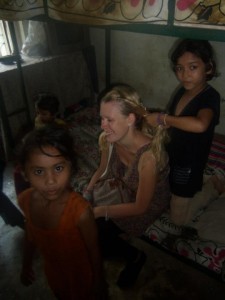 “Didi, didi, where you go?” Bimala pulls at my elbow, looping her tiny arm through the crook and trying to swing. She has spotted me leaving. In three to five seconds the others will emerge from the bedroom, the same melting chocolate eyes blinking in confusion. It is week three and I still have no idea what to say. How do I explain that I am going for a walk and a coffee instead of playing with thirteen attention hungry children? I can just about cope with unhooking her clammy fingers, firing my other arm out of reach so she can’t reattach. I squint out at the Nepali sun, then back into the dimming corridor of the orphanage. There is nowhere for them to go.
“Didi, didi, where you go?” Bimala pulls at my elbow, looping her tiny arm through the crook and trying to swing. She has spotted me leaving. In three to five seconds the others will emerge from the bedroom, the same melting chocolate eyes blinking in confusion. It is week three and I still have no idea what to say. How do I explain that I am going for a walk and a coffee instead of playing with thirteen attention hungry children? I can just about cope with unhooking her clammy fingers, firing my other arm out of reach so she can’t reattach. I squint out at the Nepali sun, then back into the dimming corridor of the orphanage. There is nowhere for them to go.
‘Chai, chai, coffee, coffee, chai, chai, coffee, coffee…’ The boy sings out on the Chennai train, his voice carrying through the steamy carriages and stirring the dozing men. Heads wobble that Indian wobble. Most mean no, some, somehow, indicate yes. Soon the samosa, samosi boy will come and the newspaper triangles will be handed out, hot in the hands of hungry travellers. Green chillies and ginger and cinammon and masala and all the smells and savours of wonderful, wonderful India and its ever tightening grip on the senses. I barely even remember the coffee here. Just the lemon infused hours of Kerala evenings and coconut breakfasts and street side Agra dhosas. Camels and tuktuks and motorbikes and Khan and Afsal and dolphins and mosquitos and the rose terracotta of Jaipiur’s sunset; a rolling reel of moments that were cut too short and too soon.
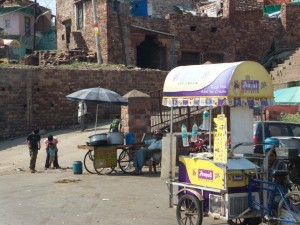 We like to joke that we are turning into teachers already, brewing our coffee mugs in the staffroom before 9am and clipping back up the stairs for briefing. Gone are the bikini strings and elephant pants, though braids are still pulling hair back from shiny faces and a few bamboo tattoos peek out from underneath waistbands and flip flop straps. Everyone tries to understand the future perfect tense and how to teach idioms, filing away game ideas and making mental notes to never, ever plan a lesson about religion or attempt to pat a Thai student’s head. Then a mosquito lands on an arm and you become distracted, thinking about a Koh Phi Phi weekend or a pad thai special. Coffee is the answer to rum bucket hangovers and sunburn sting.
We like to joke that we are turning into teachers already, brewing our coffee mugs in the staffroom before 9am and clipping back up the stairs for briefing. Gone are the bikini strings and elephant pants, though braids are still pulling hair back from shiny faces and a few bamboo tattoos peek out from underneath waistbands and flip flop straps. Everyone tries to understand the future perfect tense and how to teach idioms, filing away game ideas and making mental notes to never, ever plan a lesson about religion or attempt to pat a Thai student’s head. Then a mosquito lands on an arm and you become distracted, thinking about a Koh Phi Phi weekend or a pad thai special. Coffee is the answer to rum bucket hangovers and sunburn sting.
Home. Home. Hoooome. My favourite mug, warm inside tanned hands with silver rings and unkept nails. Hot against chapped lips and steaming in the over-freckled face of one just returned.
The post Where do you drink yours? appeared first on We Said Go Travel.
June 5, 2014
How to Celebrate Songkran – Thailand’s Best Fest
It had been way more than 24 hours since I’d been dry in any sense of the word and my hand was beginning to develop weird bruises and blisters from slinging a water gun. The dense dose of cheap Song Sang Thai whiskey that spiked my bloodstream certainly helped dull any discomfort, and the urgency to run second-point on our counter attack of “that guy with a hose” arrested my mind.
I hid behind a truck waiting on my friends, currently tied up in another water battle, leaning on the back, fading off in the afternoon heat, either drunk or tired or else that weird combination that as long-term travelers you begin to regard as next to normal.
Without warning a bucket of ice water poured over me, straightening my spine in one snap. I darted away, splashes of the freezing water licking my ankles as I fired back over my shoulder.
Songkran is truly the festival to end all festivals.
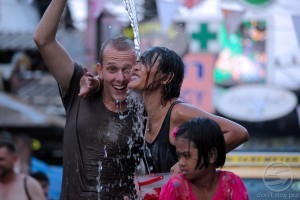 Celebrated in Thailand as the traditional New Year’s Day from the 13th to 15th of April, Songkran has evolved into the absolute largest water festival in the world.
Celebrated in Thailand as the traditional New Year’s Day from the 13th to 15th of April, Songkran has evolved into the absolute largest water festival in the world.
The festival originates from the customs of the Dai ethnic minority, who, as part of their New Year celebrations, traditionally hold a symbolic water splashing ritual called “Bathing the Buddha.” Water is regarded by the Dai people as a symbol of religious purity and goodwill, so in bathing the Buddha, and then one another, we wash away the bad and welcoming a clean, fresh New Year filled with prosperity and luck.
These humble beginnings have exploded into nationwide chaos beginning annually around April 13 – sometimes lasting as long as 5 days in areas like Chang Mai.
Here’s what to know before heading to Songkran:
No one is safe
 Everyone gets completely soaked during Songkran, no exceptions. Typically if you’re eating or holding a baby, people will grant you temporary asylum from the madness, but if you are outside – you will get wet.
Everyone gets completely soaked during Songkran, no exceptions. Typically if you’re eating or holding a baby, people will grant you temporary asylum from the madness, but if you are outside – you will get wet.
You can’t get angry
What totally blew my mind was watching the people who would get upset about having water thrown at them (unsurprisingly, it was always tourists.) This festival is the lifeblood of the Thai people and they throw their entire heart into it – locals we met said that the energy prior to the festival incubates for weeks. So if you get mad about anything during the festival, not only will your dissent be disregarded but if you pitch a fit, everyone in the nearby vicinity will point their water weapon at you.
Make friends with some locals
Thailand has already claimed its berth as one of the destinations in the world attracting the greatest number of tourists, and that figure only increases during Songkran. It’s very easy to cling to a group of foreigners as the celebrations unfold. But the Thai people are incredibly friendly and gracious, and if you show the slightest inclination of celebrating alongside them, you’ll be welcomed with open arms.
The Thais look forward to Songkran all year, and so whether its riding around in the back of pickup trucks or helping holding down a fort equipped with massive garbage bins of ice water, you won’t go wrong partnering up with some locals – and an entirely new side of the festival may open up for you.
Do not drive a motorbike unless you are a very comfortable driver
When you’re in Southeast Asia you’re bound to find yourself on the back of a motorbike at some point – they’re undeniably the easiest, fastest and usually cheapest way to get yourself around, while adding a bit of autonomy to your trip. But so many tourists wind up with what we’ve heard called “Thai tattoos,” or massive scars and bruises resulting from motorbike accidents. (Not to be confused with the other kind of Thai tattoo – fire jump rope burns.) The point is that plenty of tourists wind up at the clinic during perfectly safe driving conditions – Songkran adds that extra element of water being thrown in your face while you’re driving.
Get a waterproof pouch
During Songkran the street vendors will be selling pouches big enough for your money, keys and phone that hang around your neck. Invest in one.
Don’t cheap out on your water gun
Your gun is your lifeline during Songkran, not buying one isn’t even an option. Of course you’ll be attacked even if you’re brandishing one… but if you’re not you’ll be completely bombarded. That said, late into the second day of combat you’ll be cursing yourself for buying that crappy 200 Baht gun when the trigger’s falling off and it leaks from every angle. As can be said for many, many other things in Thailand: don’t go for the cheapest option.
Book ahead
Hostels, hotels and everything else fill up in a heartbeat during Songkran. For backpackers, realize that many hostels and guesthouses will require you to book 4-5 nights over Thai New Year as well, so that could change up your travel plans.
It doesn’t really matter where you are!
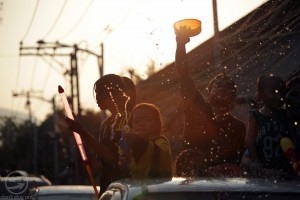 In the weeks before Songkran, I researched what the festival is like in just about every corner of Thailand, trying to organize our itinerary so we could get the most out of it. What I found was that all that research wasn’t really even necessary.
In the weeks before Songkran, I researched what the festival is like in just about every corner of Thailand, trying to organize our itinerary so we could get the most out of it. What I found was that all that research wasn’t really even necessary.
Chang Mai is the famous epicenter of the festival, where it churns on for upwards of 5 days. Bangkok, a city known for its day-to-day organized chaos, also gets ridiculous during the festival. Many flock to one of these places for the festival, but I found that it really doesn’t matter where in Thailand you are. The entire population participates in Songkran, and honestly, it’s usually better if you’re away from where the tourists flock. We wound up in Koh Samui on New Year’s Day, but the photos, the stories, the madness, the chaos were all reported equally from every island, city and town in Thailand.
The post How to Celebrate Songkran – Thailand’s Best Fest appeared first on We Said Go Travel.
June 4, 2014
The Tsar’s Guide to a St Petersburg Tour – Part Two

Hotel Vera
Where to Stay
If you are not arriving by cruise ship you will need a Tsar’s residence to live in during your stay. A boutique hotel such as Hotel Vera is the optimal place to feel the cultural side of the city and not spend a king’s ransom for lodging. The hotel itself is a cultural masterpiece and is part of the St. Petersburg Registry of Architectural Treasures. The hallways are decorated with artwork and live piano music is often heard enchanting visitors from the lobby area. It is also one of the few hotels in St Petersburg that is wheelchair accessible, thus offering all guests the chance to feel like a Tsar.
What to Eat
Russian cuisine is full of delicious delicacies which will tempt your taste buds. One of the main dishes that appeals to visiting tourists is Russian pancakes, or “bliniy.” It is similar to a French crepe and includes various toppings such as meats, jams, and vegetables. Try pancakes with red caviar to make your dish more extravagant and worthy of a Tsar’s meal. Wash down your pancake with honey beer (Medovukha), which is an alcoholic beverage which is similar to mead which has the sweet taste of honey to quench your thirst.
Souvenirs
No grand tour of St. Petersburg is complete without taking home treasures fit for a Tsar. Here are some of the most popular souvenirs which you should consider adding to your treasure trove:
Matryoshka Doll - These dolls are often referred to as Russian nesting dolls and is usually painted of a Russian woman in traditional Russian clothes. But these days you can find Matryoshka dolls with everything from President Putin to American football teams.
Amber Jewelry – Amber is actually fossilized tree resin which has been valued since antiquity as a gemstone. About 90% of the world’s amber comes from Kaliningrad, the western enclave of Russia on the Baltic Sea. Amber jewelry is something very unique to Russia that you can take home with you and cherish forever.
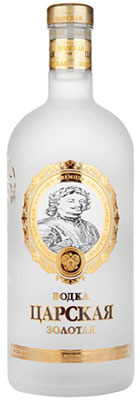
Tsarskaya Vodka Gold
Russian Vodka – As cliche as it may sound, visitors from around the world don’t leave Russia without taking a bottle of the Russian national drink with them. There are countless varieties although for the purposes of this article we recommend Tsarskaya Vodka Gold complete with an image of Peter the Great on the bottle and filtered through gold membranes. This vodka is truly fitting for your Tsar tour of St Petersburg.
Concierge Service
To make your Tsar’s Tour of St Petersburg complete, great service is essential. Should you have any problems, questions, or requests, you can call the free concierge and information service hotline with English language available – +7-812-300-3333
 About the Author – Brian Schweitzer is the Co-Founder of Travel Guru – The smart travel expert, a website dedicated to smart travel information and connecting travelers. He has traveled to over 16 countries and counting, while living more than 14 years in St Petersburg, Russia. Brian is also a marketing and business development consultant who works with companies around the world to improve their businesses by maximizing the potential of the Internet & Information Age. He is currently traveling the world with his wife Alexandra and their son Dominick, with the goal leaving each place better than when they found it.
About the Author – Brian Schweitzer is the Co-Founder of Travel Guru – The smart travel expert, a website dedicated to smart travel information and connecting travelers. He has traveled to over 16 countries and counting, while living more than 14 years in St Petersburg, Russia. Brian is also a marketing and business development consultant who works with companies around the world to improve their businesses by maximizing the potential of the Internet & Information Age. He is currently traveling the world with his wife Alexandra and their son Dominick, with the goal leaving each place better than when they found it.
Read Part One: Click here!
The post The Tsar’s Guide to a St Petersburg Tour – Part Two appeared first on We Said Go Travel.
June 2, 2014
The Insanely-Tested Top Ten Travel Tips for Spring
Spring is the season hope is rekindled, when broken blades are renewed, and light washes the shadows. We can go barefoot in the grass, pluck the charms of flowers, whistle in the warming breeze, and hit the winding road.
 Jasper Bangs celebrating Spring
Jasper Bangs celebrating Spring
But, as with any venture, travel can have its pitfalls and pitsprings, if the traveler is not rightly attuned to or aware of warning signs. Many, and I include myself, celebrate uncertainty, mystery, and well-planned trips gone wrong. But it is just to a point, as nobody wants to go over the cliff of recklessness.
For many years I’ve tested the parameters of travel, and have made discoveries, and mistakes. I’ve learned equally from both. And so, to guide those desirous of good travel this spring, passages without dread or detours, I’ve put together my list of the top ten travel tips for this spring, gleaned from delirious misadventures all over the world:
#10
#9
#8
#7
#6
#5
#4
#3
#2
#1
————

The author about to spring downstream
The post The Insanely-Tested Top Ten Travel Tips for Spring appeared first on We Said Go Travel.
Planning Our Trip to Europe
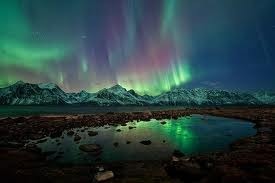
The Northern Lights; Image courtesy of Google Images
Planning a trip to Europe can be time consuming, difficult and frustrating. Even though each country is roughly the size of a state in the United States, most countries have their own language and some still have their own currency, such as the UK and Switzerland. For these reasons and many more, foreigners can find planning a trip to the continent cumbersome. Going through a travel agent can be expensive and can be time consuming as well. With the invention of the internet, many tourists now plan their trip online. It allows for flexibility and you can also plan a trip without having the pressure of a salesperson pushing you along. Currently, I am one of many across the world in the planning phase of an upcoming trip to Europe.
My wife and I are currently on an around the world trip; which started in South East Asia in January. We started out in Bangkok and travelled through Cambodia, Vietnam and up the East Coast of China. We are currently in Beijing, planning our trip along the Transiberian Express through Mongolia and ending up in St Petersburg, Russia. Once we get to St. Petersburg, we are planning on visiting as much of Europe as we can; hopefully continuing through Scandanavia, through the UK and on down through France, Switzerland and Italy, before returning home to the USA.
Along our trip, we have used many internet websites to help in our trip planning. Most of the time, we would have to go to many different websites to plan because Asia does not have a search engine that can compare multiple sites for the best value. For our Europe leg of our trip, we found that a site called GoEuro has helped us out tremendously. It has helped us the most in deciding how to get from one city to the next as it gives us many options of travel and also incorporates the cost of how to get from your hotel to the train station/airport/bus station etc. We have found this a useful feature as it compares not only like-kind travel, but also compares buses to trains to airplanes.
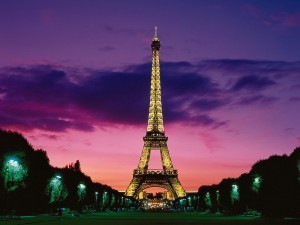
The Eiffel Tower; Image courtesy of Google Images
Our time in Asia is nearing an end. Even though we have had so many great experiences and memories during our time here, Asia has been amazing and yet exhausting at the same time. We can’t wait to start our Europe portion of our trip as it is time for us to enter our next part of our journey. We know that Europe will be much different than Asia and can’t wait to see what the future has in store for us! We are looking forward to seeing the Northern Lights in Scandanavia, Buckingham palace in the UK, The Eiffel Tower in Paris as well as many other attractions along the way.
The post Planning Our Trip to Europe appeared first on We Said Go Travel.
June 1, 2014
A Cooking Class in Tuscany, Italy
Tuscany: Rolling hills, fine wine, fascinating history and, of course, phenomenal food. While visiting Tuscany it was only
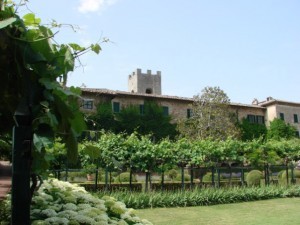
Enjoying the grounds of Badia a Coltibuno
appropriate that to supplement our (impressive amount of) eating we learn to create as well.
Our family enrolled in an afternoon cooking class at the Badia a Coultibuno, a beautifully preserved eleventh-century abbey-turned-vineyard, restaurant, inn and cooking school. Following a brief tour of the grounds, the wine cellar and the library we were lead to the kitchen where we met the formidable Tuscan chef Andrea.
In heavily accented English, Andrea instructed us through slicing buttery zucchini and choosing the most flavorful basil. He trained us to crush day-old bread between our wet hands to create Panzanella (recipe below) and invited us to drink olive oil- straight- to understand the intricacies of the flavor and harvest of the fruit.
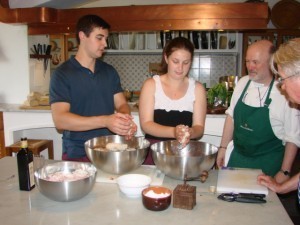
Under Andrea’s watchful instruction, we prepared the Panzanella salad
Italian lunches do not disappoint, and we created a bean soup, Panzanella salad, braised chicken with potatoes and vegetables, and a desert. Of course, each course was paired each with a beautiful wine from the vineyards. Andreas joined us for our meal, regaling us with the stories of his culinary career and his opinions on the art of cooking.
With our delicious creations and the Badia’s fine wine in our bellies, we set off for a cat nap on sunny bench in the abbey gardens. Perhaps it was the hard work or the authentic experience, but our home-cooked meal at Badia a Coultibuno was one of the culinary highlights of our journey through Italy.
Panzanella: Serves 4
Ingredients
2 garlic cloves, sliced
1 cup extra virgin olive oil
1 loaf of crusty country bread (approx. 1lb) sliced or torn into 1-inch pieces. Unsalted Tuscan bread is the most authentic
Coarse salt
Ground black pepper
1 large red onion, chopped
1 tablespoon white wine vinegar
3 tablespoons red wine vinegar
4 large tomatoes (Roma variety is best)
1-2 cucumbers
1 bunch basil
Instructions
Moisten the bread under the faucet. It should be moist all the way through. Gently squeeze excess water from the
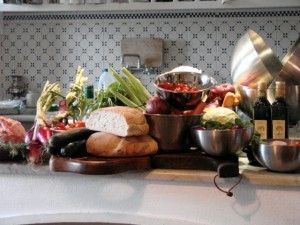
The beautiful, fresh ingredients
bread with your hands. The bread should crumble, not clump or collapse in a soggy mess.
Shred the bread into a large salad bowl. You can crumble the bread down until there are very fine pieces, or “breadcrumbs” that resemble couscous.
Cut the cucumbers and tomatoes into 1/2 inch pieces and add them to the bowl. Thinly slice a red onion and shred the basil, adding them into the bowl and mix with your hands for the most authentic experience.
Add the vinegars and olive oil and mix completely, add more olive oil, salt and pepper to taste.
The salad can be served immediately or chilled for 30 minutes in the refrigerator before serving.
The post A Cooking Class in Tuscany, Italy appeared first on We Said Go Travel.
We Said Go Travel
We Said Go Travel is a global community of over sixteen hundred writers with articles from every continent.
Stories are shared with photos and video from a perspective of the transformative power of travel. We Said Go Travel has hosted live and online events as well as travel writing contests around the world. ...more
- Lisa Niver's profile
- 57 followers


